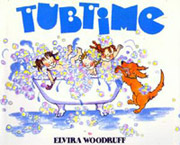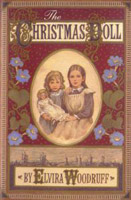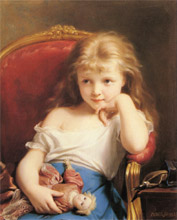Tips for Young Writers

1. Stay in real life as much as you can.
In order to write about life you have to experience it firsthand. Too much television, video games, and screen time can stifle your inner voice and dull your imagination. Get out in nature and experience great stories happening all around you in real time.

2. Finding your characters in your family.
Observe the people in your family. What quirks do they have? Does your grandfather snort? Does your mother snore? Does your uncle remind you of Count Dracula? What kinds of problems do they have? Is your older sister worried that her legs are too hairy? Is your younger cousin afraid of spiders? Often your greatest characters can come right out of your own family. You simply need to look and listen, and to write it all down.

3. The more you read, the better you write.
I’ve learned how to write by reading great books. Read, read, and read some more. Reading in bed with a bowl of popcorn is a good way to go about this.
4. Keep two journals.
The first journal is for real-life observations. What are you and your family doing each day? Be sure to use all of your senses. Report on what you see, hear, smell, and feel.
 The second journal will be your fantasy journal. Here you will take a trip and let your imagination run wild. In this journal you can live out your dreams. Go to the places you’ve always wanted to go to. Do the things you’ve always wanted to do. Once again be sure to use all of your senses in describing your make-believe journey. Enjoy the trip!
The second journal will be your fantasy journal. Here you will take a trip and let your imagination run wild. In this journal you can live out your dreams. Go to the places you’ve always wanted to go to. Do the things you’ve always wanted to do. Once again be sure to use all of your senses in describing your make-believe journey. Enjoy the trip!
5. Be on the lookout for great stories all around you.
You don’t have to travel across an ocean to find great ideas for stories. My two sons, Noah and Jess, inspired me to write Awfully Short For The Fourth Grade and Back In Action. I didn’t have to leave my house to find inspiration.
My memories of taking a bath with my two sisters inspired my picture book, Tubtime. You can find great story ideas in your backyard, your classroom, your lunchroom, and even your bathtub!


6. You have to write through the trash to get to the treasure!
Expect mistakes, and lots of them. I’ll rewrite one sentence a dozen times or more before I’m happy with it. Sometimes I have to cut out entire chapters.
Writing through the trash to get to the treasure is a big part of creating a story. You must be as determined as a pirate looking for that buried treasure. No matter how many mistakes you make, you just won’t give up!

7. Fun first!
Don’t try and correct each and every word as you go. Write your story out and then go back and make your corrections. Worrying about spelling, grammar, and punctuation while you are writing can take the air out of your creative surge and bog you down. I check all of those boring things over after I’ve finished for the day. If you have fun first in the telling of your story, you’ll be more likely to want to buckle down and get all of those sentences as perfect as you can.

8. Read out loud.
Read what you’ve written out loud. I do this all the time so that I can hear how the words flow.
9. Keep your ears open for a good story-starter!
Sometimes a good story-starter can come from your friends and family. One day my niece, Franny Rose came for a visit.  She loved dolls and asked to play with an old doll in my study. Then she asked me if I would write a story just for her.
She loved dolls and asked to play with an old doll in my study. Then she asked me if I would write a story just for her.
Sure, I answered. “But you must tell me what the story is going to be about.”
She thought for a bit, then looked down at the doll in her lap. “”Would you write me a story about a girl and a doll?” she asked.

And that was all I needed! I had my story-starter.
From Franny’s one smidgen of an idea I developed a story about a girl living long ago in England. After pulling an old doll out of the river, Thames, she and her sister, Glory, find their way to Thimblebee’s Doll Shop.
I did a lot of research for that story and even took a trip to England to see where my story was set. I really enjoyed working on that book, and it all began with one little story-starter. So of course that is why The Christmas Doll is dedicated to Franny Rose!

10. Every good story has a problem.
Every good story needs tension. Tension comes from a problem. Humpty Dumpty is a good example of this. He is a character who has been in children’s literature for over a hundred years. Why has he lasted so long? It’s the tension in his story- the problem of being an egg that is sitting on a very high wall. If he were to fall he would end up like this. In all of my books there are different problems to be solved. Pay attention to your story’s problem.
11. Let your characters lead the way.
If you are having a hard time coming up with an idea for a story, try starting with the characters first, as I did in my book Dear Napoleon I Know You’re Dead, But…

When I began that book, I had no idea what the story was going to be about. I just pictured this boy, Marty, who was writing a letter to Napoleon for a class project. The problem was of course that Napoleon had been dead for a long time. But I decided that Marty was going to write his letter anyway. From that one idea of a very determined boy, an entire story developed.
Begin by describing your main characters. Are they quite good at one thing and awful at another? Are they awful at everything? What makes them laugh or cry? Describe their biggest fears. If they could have one wish what would it be? Create a strong character and let them lead you into your story.
12.Write from your heart.
Write about things that matter most to you and your words will soar!

